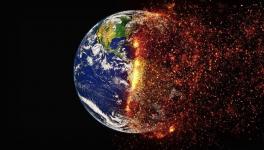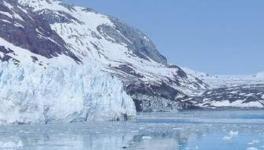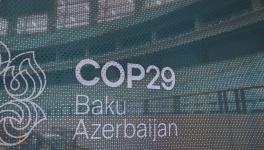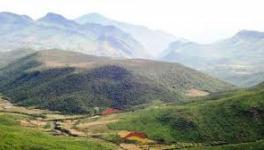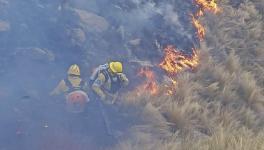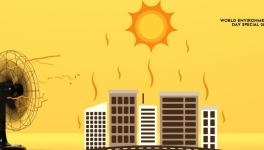Ozone-Destroying Hydro Chlorofluorocarbon on Rise in Atmosphere Despite Curbs
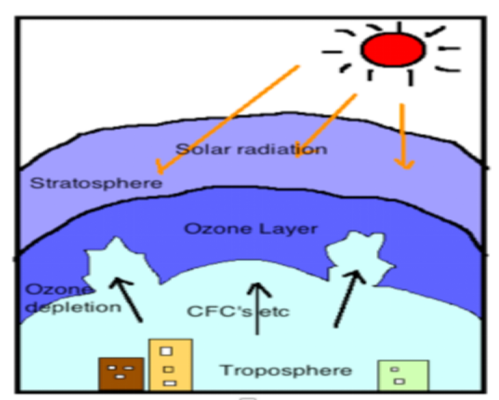
Image Source: Wikimedia Commons. Image is for representation only.
For an extended period, efforts have been made to curb the use of certain chemicals responsible for destroying the ozone layer, which provides protection from the Sun’s ultraviolet rays. However, despite the global efforts, it has recently been found that one such ozone-destroying chemical called the HCFC (Hydro Chlorofluorocarbon)-141b is mysteriously rising in the atmosphere. Notably, the production of HFCF-141b has declined since 2012, and its rise has shocked scientists. The report was recently published in the Atmospheric Chemistry and Physics and has not been peer-reviewed yet.
The assessment says that emissions of HCFC-141b have gone up each year between the period of 2017 and 2021. In this period, there has been an increase of 3000 tons of HCFC-141b, the researchers estimated. The researchers combined measurements from air sensors with computer models to predict how the gases move through the atmosphere.
The findings point to the challenges of curbing these dangerous chemicals, which can stay for a long time in appliances where these were used, sometimes for decades. Also, the researchers pointed to the huge gaps in installed sensors. They mentioned that the sensors are installed within continent-size gaps, creating difficulties in detecting the sources of the chemicals.
The HCFC-141b is used primarily in making foam insulation for some electrical appliances like refrigerators. It belongs to the family of fluorocarbon molecules blamed for destroying the Ozone layer in the stratosphere, just around 20 kilometres from the ground. The Montreal protocol of 1987 laid the foundation for curbing these kinds of chemicals. Notably, the Montreal protocol has been considered one of the most successful international environmental treaties. Reports say that since the early 2000s, the ozone-destroying chemicals have declined steadily, and the ozone holes above the poles have begun to improve.
It’s worth recalling that the latest assessment of HCFC is not the only case of rise in these chemicals; back in 2018, researchers reported that the level of CFC-11, another banned chemical, had been on the rise since 2012, and illicit production of the chemical was attributed for the observed rise. At that time, HCFC-141b was used as a substitute for CFC-11 as it was thought to be less harmful to ozone. However, emissions of CFC-11 began to fall again in 2019.
HCFC-141b also saw its phase-out in 2013 with a proposed total ban by 2030. It has already been replaced by other groups of chemicals that appear less harmful to the ozone layer. This implies that this chemical should have been on the decline, which is opposite to what the latest findings have revealed.
Luke Western, an atmospheric scientist at the NOAA (National Oceanic and Atmospheric Administration) Global Monitoring Laboratory, expressing astonishment at the findings, commented, “All I can really say is these emissions are up.” Western helped lead the research.
However, the rise of HCFC-141b is not the same as the case of CFC-11, at least in terms of its origin. In the case of CFC-11, it was found that much of its production was happening in eastern China. Air sensors in South Korea suggest that the origination of HCFC-141b is not from eastern China; instead, it appeared that the chemical was coming from somewhere in the northern hemisphere.
Stephen Montzka, an atmospheric scientist with NOAA, said on the issue, “I think in the instance of 141b the situation is much murkier. One possibility is that unreported HCFC-141b is being manufactured somewhere in the world. Taking a close look, we realised there are possible explanations that don’t require somebody doing something that they weren’t supposed to do.” The rise could also be a temporary phenomenon as ageing appliances, which are discarded, could be responsible for it as the foam breaks down and the gas is released.
As of now, the existing gaps in the installed air sensor network have made it challenging to answer the cause of its rise with certainty. Notably, much of the air sensors are concentrated in North America and Europe; East Asia has only a handful of these. Scientists are unsure of what is actually happening in the regions where the sensors are scarce.
Get the latest reports & analysis with people's perspective on Protests, movements & deep analytical videos, discussions of the current affairs in your Telegram app. Subscribe to NewsClick's Telegram channel & get Real-Time updates on stories, as they get published on our website.












